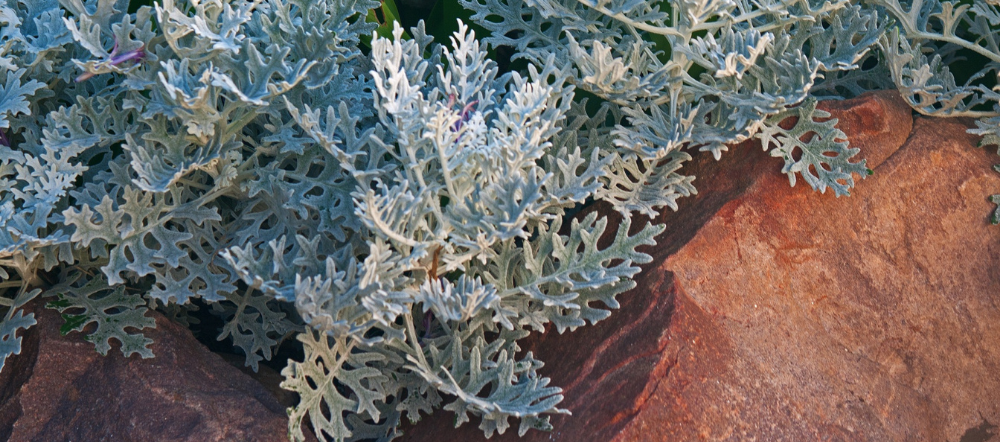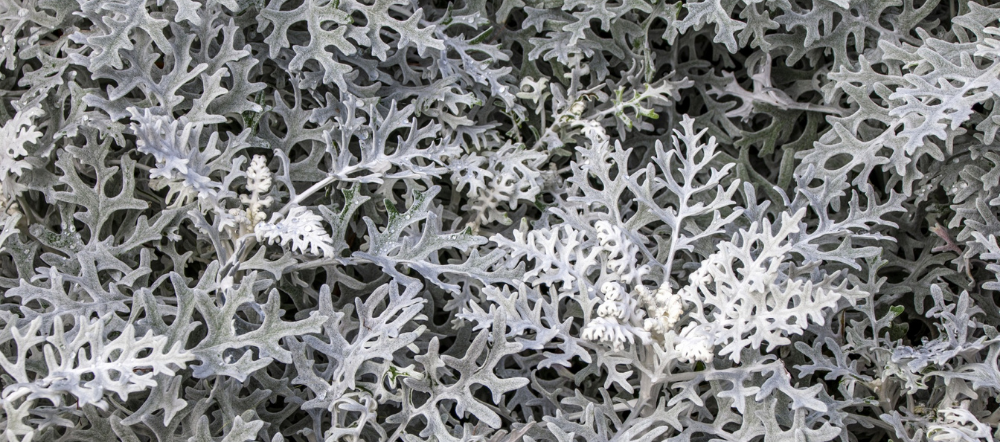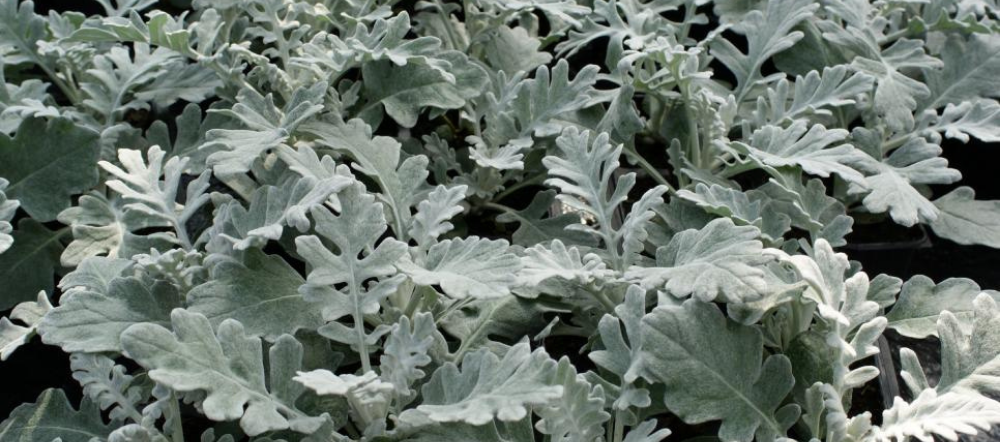Looking for insight on how to care for your Dusty Miller plant? We put together a guide for Dusty Miller care.
What is the Dusty Miller plant?
Dusty Miller (sometimes referred to as “Silver Ragwort”) is a popular annual with silvery leaves. The plant grows great in landscape beds, pots, hanging baskets, and container gardens.
If left to grow freely, Dusty Miller will grow small yellow flowers, similar to daisy’s blooms. Dusty Miller is known more for its gorgeous foliage than its flowers.
Dusty Miller Plant Care
Whether you are growing your Dusty Miller plant from seed or purchasing a plug from a local greenhouse, your success at growing a healthy plant depends on the care and attention you give it.
Here are some of the top things to consider when planting, caring for, and enjoying your Dusty Miller plant.

Sunlight requirement
Dusty Miller grows best with full to partial sun exposure. As a general guideline, your Dusty Miller should get at least 4 hours of sun exposure every day.
Generally, Dusty Miller is drought-resistant — their plant biology allows the plant to tolerate and even excel with a full day of sun and heat.
Temperature needs
Dusty Miller plants will thrive when grown in temperatures that range from 40-60 degrees (Fahrenheit).
For this reason, be extra cautious when planting your Dusty Miller outside in the spring — depending on your growing zone (it grows great in PA’s growing zone). You may have to wait until after Mother’s Day to safely plant your Dusty Miller plants outside.
Dusty Miller plants will grow great in growing zones 8 through 10, which is comprised of many of the southwest states in the United States. In these areas, temperatures may actually allow for Dusty Miller plants to withstand the winter.
For northern states, Dusty Miller is grown more as annuals with mid-spring to late summer being their main growing season.
Height and spread
Dusty Miller plants will grow up to 3 feet tall, producing beautiful silver branches of leaves that make them a great addition for pots or a flower bed. Even before your Dusty Miller reaches their full height, the plant will mature when it’s about 6 to 18 tall.
Dusty Miller plants can branch out as far as 9″ – 12″. It’s best to give your Dusty Miller plants plenty of space — looks can be deceiving when you are planting a small plug into the ground. A plant that has plenty of space and breathing room will be less prone to disease.

Soil Type
Dusty Miller grows best in soil that is well-drained, with a pH level of 5.5 to 6.0. They will normally perform great in your flower bed soil or potting soil when container gardening.
Fertilizer needs
Depending on where you are planting your Dusty Miller plants (and in what type of soil), your fertilizer needs will vary.
If you are planting your Dusty Miller plants in nutrient-rich soil, perhaps with organic matter (molding leaves, compost, etc.), these plants will grow great. They don’t need as much nutrients as some plants, so starting with good soil is often enough to keep them happy.
For soil that is not built up with organic matter or even potting soil, fertilizing Dusty Miller plants every 2 to 4 weeks will be plenty for them.
Disease and pest control
Depending on your growing conditions and area, Dusty Miller may be prone to certain diseases and pests that can hurt its growth. While Dusty Miller is an easy-care plant when it comes to the care it needs, if hit with disease or garden pests, this plant will suffer like many other plants.
Like many other types of plants, Dusty Miller is prone to root rot (a disease where a plants’ roots begin to decay). This is where the well-drained soil comes into play — soil that holds too much water will increase the plants’ chances of getting root rot.
Dusty Miller can also be prone to get powdery mildew, a fungal disease that can be spread by Aphids.
Speaking of Aphids, these are going to be the plants’ #1 pest enemy. If you notice that the plants’ leaves are drying up or even shriveling (or if the plant just doesn’t look healthy), it may be a good idea to check for Aphids. These pests are often found on the underside of leaves.
When dealing with Aphids, mild insecticides can be used to wipe out any invasions.
Pruning Dusty Miller
When left to grow themselves, Dusty Miller may become strangely in the middle of the growing season. To help your Dusty Miller plant return to its vibrant days, trim back your plant to up to half its full size.
As long as you continue to care for the plant, it will grow back with healthy new growth.

Propagation of Dusty Miller
Looking to start growing more Dusty Miller plants? You can propagate your plant by snapping off a stem and setting it in water for a few days. When you start seeing small rootlets growing from the plant, it’s likely good to be gently planted into the soil.
Conclusion
Overall, Dusty Miller is a great plant for beginner gardeners who want to try growing something that is relatively easy-care, produces beautiful foliage and flowers.

